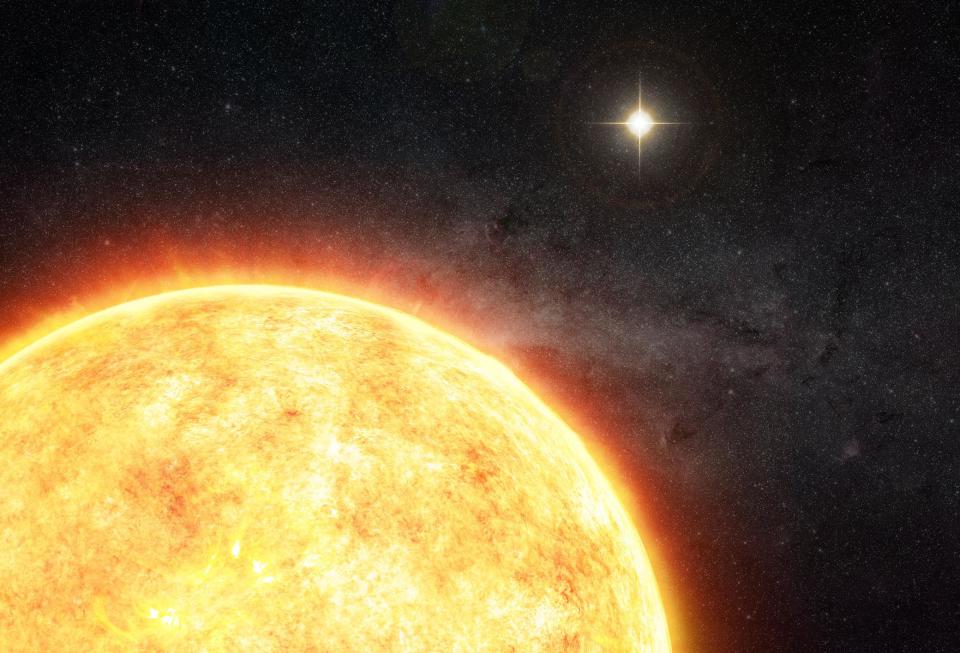There might once have been a second sun in our solar system, astronomers claim

Our Sun may once have had a twin companion, astronomers have suggested – like the “binary” stars of Tattooine in Star Wars.
Harvard researchers have said another sun was present as the solar system formed, and it could explain features including a cloud of debris at our solar system’s edge.
The find could throw light on events such as the arrival of water on our planet and even the extinction of the dinosaurs, the researchers believe.
It could also fill in the blanks about Planet Nine, the hypothetical body that scientists think could lurk at the edge of our solar system.
Read more: There might once have been life on the moon
Scientists believe that the Oort cloud was formed from debris left over from the formation of the solar system and its neighbours, where objects were scattered by the planets to great distances and some were exchanged among stars.
But if the Sun had once had a binary “twin” it would be easier to understand how the cloud formed, said Harvard undergraduate student Amir Siraj, one of the authors of the study.
He said: “Previous models have had difficulty producing the expected ratio between scattered disk objects and outer Oort cloud objects.
“The binary capture model offers significant improvement and refinement, which is seemingly obvious in retrospect: most Sun-like stars are born with binary companions.”
Understanding the formation of the Oort cloud could give scientists important insights into the history of life on Earth, the researchers said.
Read more: Exoplanet twice the size of Earth ‘could be habitable’
“Objects in the outer Oort cloud may have played important roles in Earth’s history, such as possibly delivering water to Earth and causing the extinction of the dinosaurs,” Siraj said.
“Understanding their origins is important.”
Binary stars are better at drawing in and capturing debris (like the material that formed the Oort cloud), according to Harvard’s Avi Loeb.
Loeb said: “If the Oort cloud formed as observed, it would imply that the Sun did in fact have a companion of similar mass that was lost before the Sun left its birth cluster.”
The researchers said that the binary star would have vanished in the early history of the Solar System, and now could be almost anywhere.
Siraj said: “The Sun’s long-lost companion could now be anywhere in the Milky Way.
“Before the loss of the binary, however, the solar system already would have captured its outer envelope of objects, namely the Oort cloud and the Planet Nine population.”
Watch video below

 Yahoo Sport
Yahoo Sport 






































